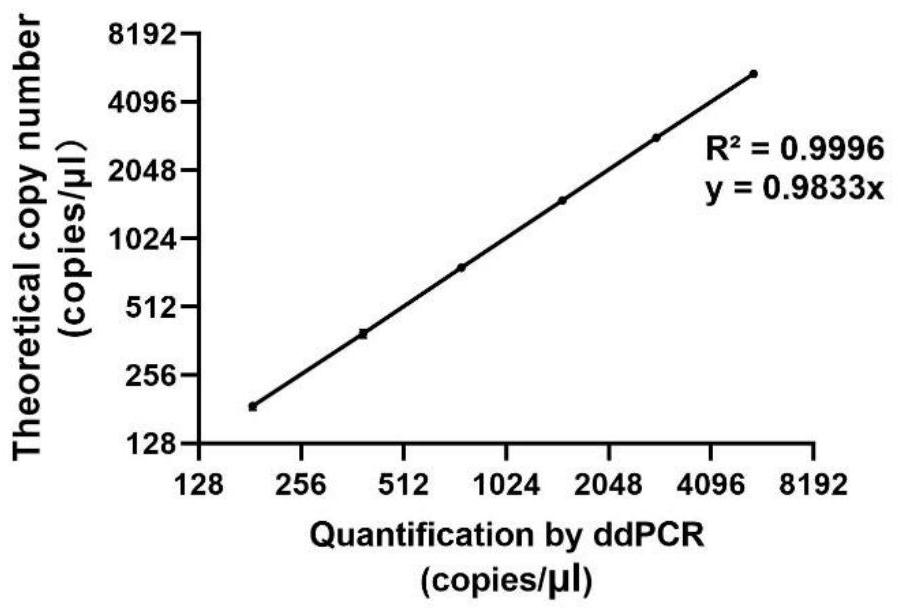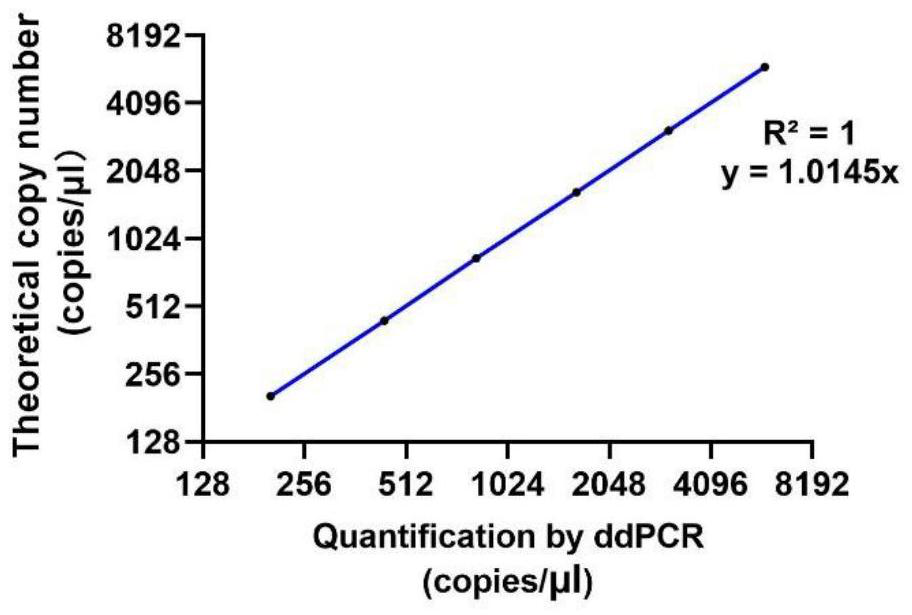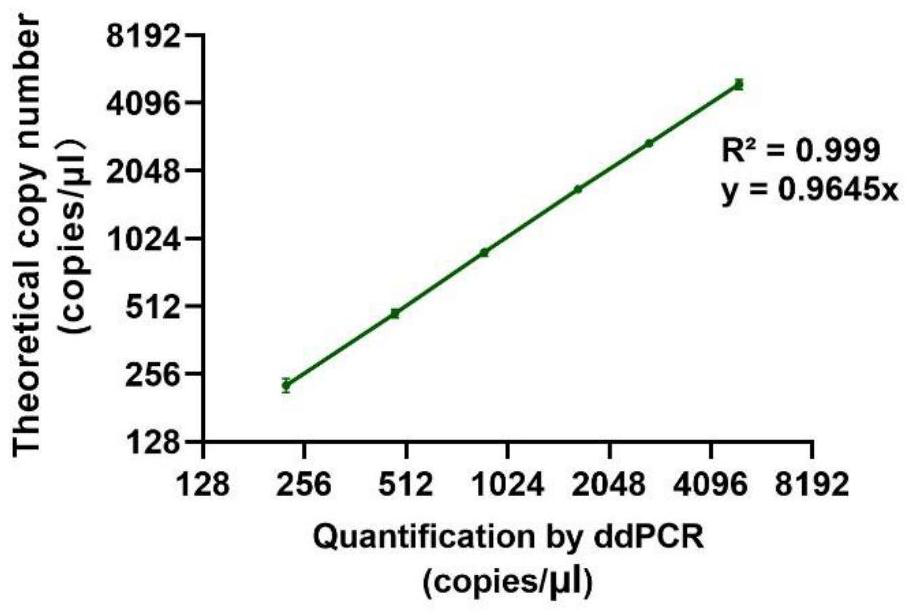Primer probe and kit for detecting lung pathogenic bacteria
A primer-probe and kit technology, which is applied in the field of primer-probe combinations and kits for the detection of pulmonary pathogens, can solve the problems of low sensitivity, high false positives, low sensitivity, etc., and improve the survival rate and accuracy. and high specificity and sensitivity
- Summary
- Abstract
- Description
- Claims
- Application Information
AI Technical Summary
Problems solved by technology
Method used
Image
Examples
Embodiment 1
[0069] 1. Primer probe
[0070] 1.1 Based on the sequence analysis results of the four genera of Aspergillus, Yarrowia, Cryptococcus and Nocardia, PrimerExpress software was used to design primers and probes; at the same time, primers and probes of a set of exogenous internal reference were matched, and the specific sequences As shown in Table 1.
[0071] Table 1 Primer-probe combination sequences
[0072]
[0073]
[0074] 2. Sample
[0075] 2.1 Bacterial DNA samples: purchased inactivated bacteria, and extracted genomic DNA by magnetic bead method.
[0076] 2.2 Human DNA samples: sputum or bronchoalveolar lavage fluid, and genomic DNA was extracted by magnetic bead method.
[0077] 2.3 Exogenous internal reference template: synthesized by a biological company, dissolved and diluted for use.
[0078] 3. Detection method
[0079] 3.1 Digital PCR amplification system
[0080] 3.1.125×Bc primer-probe mixture
[0081] Table 2
[0082] component Stock sol...
Embodiment 2
[0088] Embodiment 2 Sensitivity detection test
[0089] Obtained 190 lung DNA samples extracted from the Aspergillus fumigatus, Aspergillus flavus, and Aspergillus niger nucleic acid test kits from partner hospitals, extracted with the Aspergillus fumigatus, using our four pulmonary infection bacteria numbers PCR nucleic acid detection kit detection.
[0090] 31 positive samples were all positive, and 159 negative samples were found to be three positive for Nocardia, Aspergillus and Cryptococcus. The positive coincidence rate was 100%, the negative coincidence rate was 99.4%, the sensitivity was 96.9%, and the specificity was 99.4%.
Embodiment 3
[0091] Example 3 Specific detection experiment
[0092] The following samples were subjected to digital PCR detection according to the primer probes and method of Example 1, and the results are shown in Table 5.
[0093] Table 4
[0094]
[0095]
[0096] table 5
[0097]
[0098]
[0099] Table 6
[0100]
[0101]
[0102] Table 7
[0103]
[0104]
[0105] The results show that, for the above multiple pathogenic bacteria, the kit of the present invention can only detect four kinds of pulmonary infection fungi of Aspergillus, Yarrowia, Cryptococcus and Nocardia, and cannot detect other pathogenic bacteria. It shows that the kit of the present invention has high specificity and can accurately and specifically detect the above four fungal genera.
PUM
| Property | Measurement | Unit |
|---|---|---|
| Sensitivity | aaaaa | aaaaa |
| Sensitivity | aaaaa | aaaaa |
Abstract
Description
Claims
Application Information
 Login to View More
Login to View More - R&D
- Intellectual Property
- Life Sciences
- Materials
- Tech Scout
- Unparalleled Data Quality
- Higher Quality Content
- 60% Fewer Hallucinations
Browse by: Latest US Patents, China's latest patents, Technical Efficacy Thesaurus, Application Domain, Technology Topic, Popular Technical Reports.
© 2025 PatSnap. All rights reserved.Legal|Privacy policy|Modern Slavery Act Transparency Statement|Sitemap|About US| Contact US: help@patsnap.com



